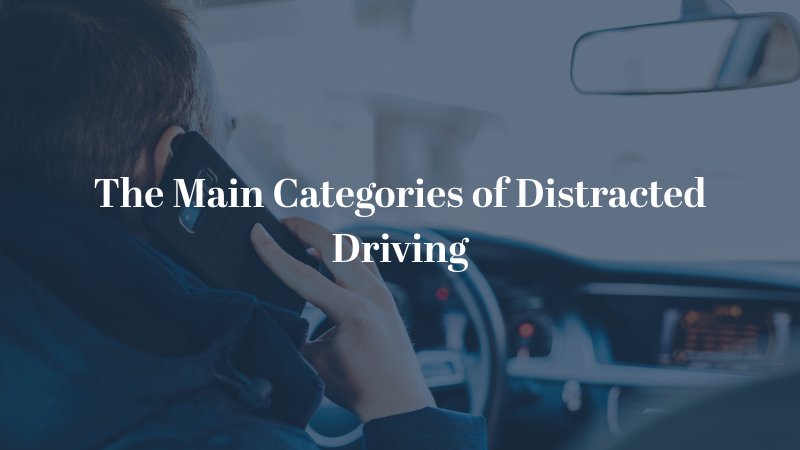
When it comes to car accidents, distracted driving is one of the leading causes. Understanding the main categories of distracted driving can help personal injury victims better comprehend the factors that led to their accident, and ultimately, strengthen their case.
Distracted driving generally falls into three primary categories: visual, manual, and cognitive distractions. Each category represents a different type of behavior that diverts a driver’s attention away from the road and increases the risk of an accident.
Visual Distractions
Visual distractions occur when a driver takes their eyes off the road. This type of distraction can significantly impair a driver’s ability to notice hazards, make timely decisions, and react appropriately to the changing conditions of the road. Here are some common examples of visual distractions:
- Looking at a GPS device or map
- Reading a text message or email
- Watching a video
- Checking a rear-view mirror excessively
Manual Distractions
Manual distractions involve any activity that causes a driver to take their hands off the wheel. These distractions can severely limit a driver’s ability to control the vehicle, leading to dangerous situations on the road. Some examples of manual distractions include:
- Eating or drinking
- Adjusting car controls
- Grooming activities
- Reaching for objects
Cognitive Distractions
A cognitive distraction occurs when a driver’s mind is not focused on the task of driving. These distractions can significantly impact a driver’s ability to process the information needed to drive safely. Common examples of cognitive distractions include:
- Daydreaming or lost in thought
- Engaging in conversations
- Stress or emotional distress:
- Cognitive load due to multitasking
Each of these actions undermines safety on the roads, making it crucial for drivers to remain focused and responsible at all times.
Common Injuries From Distracted Driving Accidents
Distracted driving is a major cause of traffic accidents, leading to a wide range of injuries. Some of the most common injuries resulting from distracted driving accidents include:
- Whiplash: Sudden jolts can cause the neck to snap back and forth violently, leading to muscle strain and ligament damage.
- Fractures: The impact of a crash can cause bones to break, commonly affecting the arms, legs, ribs, and facial bones.
- Lacerations: Broken glass and metal shards can cause deep cuts and wounds, often requiring stitches or surgical intervention.
- Head injuries: Blows to the head can result in concussions, traumatic brain injuries (TBIs), and other serious conditions.
- Spinal cord injuries: Damage to the spinal cord can lead to partial or complete paralysis, significantly impacting the victim’s quality of life.
- Internal injuries: The force of a collision can cause internal bleeding and damage to organs such as the liver, spleen, and lungs.
- Soft tissue injuries: Strains, sprains, and other injuries to muscles, tendons, and ligaments are common in car accidents.
Distracted driving contributes significantly to traffic accidents and results in a wide array of severe injuries, pointing to the critical need for focused attention and caution while on the road. For help after an accident, contact the Washington D.C. car accident attorneys from Lightfoot Law to schedule a free consultation.